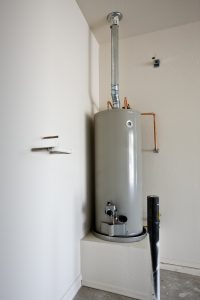 Water heaters are one of the most reliable appliances to be found in a home, and they usually do their job quietly and without complaint. Indeed, most of them are tucked away in the basement, closet, or garage, and unless something goes wrong with your hot water, you rarely have cause to think about it. Unfortunately, there’s a flip side to that reliability: most people aren’t able to notice problems with their water heaters until the problem has gotten quite bad. In many cases, by the time you notice a problem, the entire water heater needs to be replaced instead of just repaired.
Water heaters are one of the most reliable appliances to be found in a home, and they usually do their job quietly and without complaint. Indeed, most of them are tucked away in the basement, closet, or garage, and unless something goes wrong with your hot water, you rarely have cause to think about it. Unfortunately, there’s a flip side to that reliability: most people aren’t able to notice problems with their water heaters until the problem has gotten quite bad. In many cases, by the time you notice a problem, the entire water heater needs to be replaced instead of just repaired.
One important way to spot problems with your water heater before they bite you is to schedule annual service from a trained technician. they will check the water heater for signs of trouble, attend to little maintenance jobs like replacing the anode rod (which prevents rust inside the tank), and otherwise make sure that the water heater is functioning as it should. Doing so can also help extend the life of the system as well as helping it perform more effectively overall.
You can help further prevent the water heater from suffering undue wear and tear by draining it periodically. We have a lot of hard water in the area, and over time, sediment from hard water minerals can build up on the bottom of the water heater tank. This is a problem because it forms an insulating barrier between the heat source and the water in the tank, forcing the system to work harder to do its job and placing undue heat stress on the surface of the bottom of the tank. (In the worst cases of sediment build-up, you can actually hear soft gurgling noises as the water moves through the sediment structures in the bottom of the tank.) Flushing the water heater every few months can help prevent this and better ensure the water heater doesn’t suffer any trouble. Flushing the tank is very easy and involves the following steps:
- Shut off the electricity and the flow of gas to the water heater, then turn off the flow of water into the tank.
- Connect one end of a hose to the drain valve in the bottom of the tank and the other end to a receptacle capable of holding the water (ideally a drain, but a large bucket or the like will do as well).
- Open the pressure release valve at the top of the water heater to start the water flowing. It may start to flow quickly, so be ready.
- When the water level gets low, turn on the flow of water into the tank again to flush it out. Repeat this process several times if necessary.
- Seal the pressure valve, then close the drain valve and allow the tank to fill again.
- Restore power to the water heater, then return the flow of gas.
For quality water heater service throughout the Sacramento, CA area, call on the friendly technicians at Sierra Pacific Home and Comfort, Inc. today!
